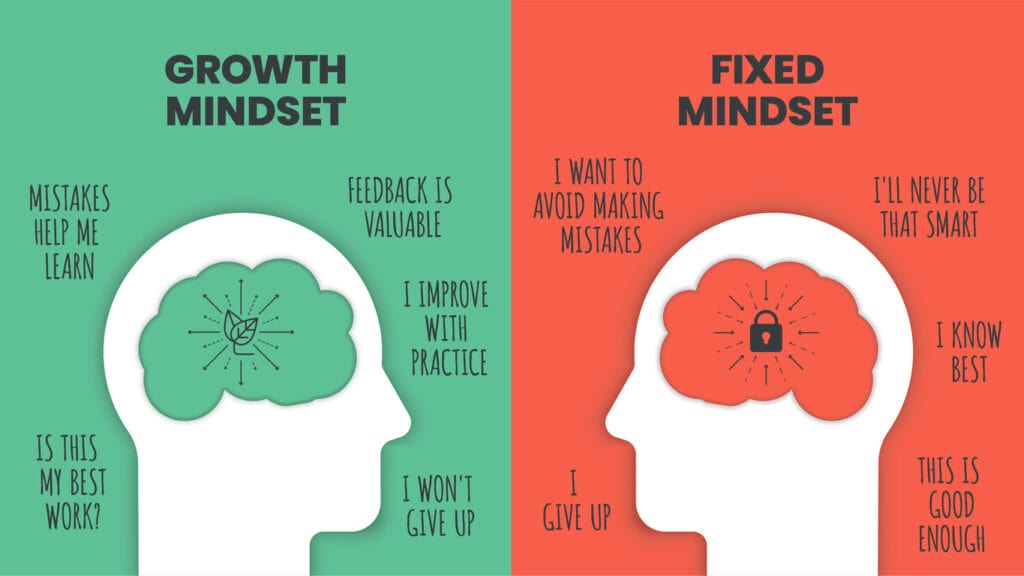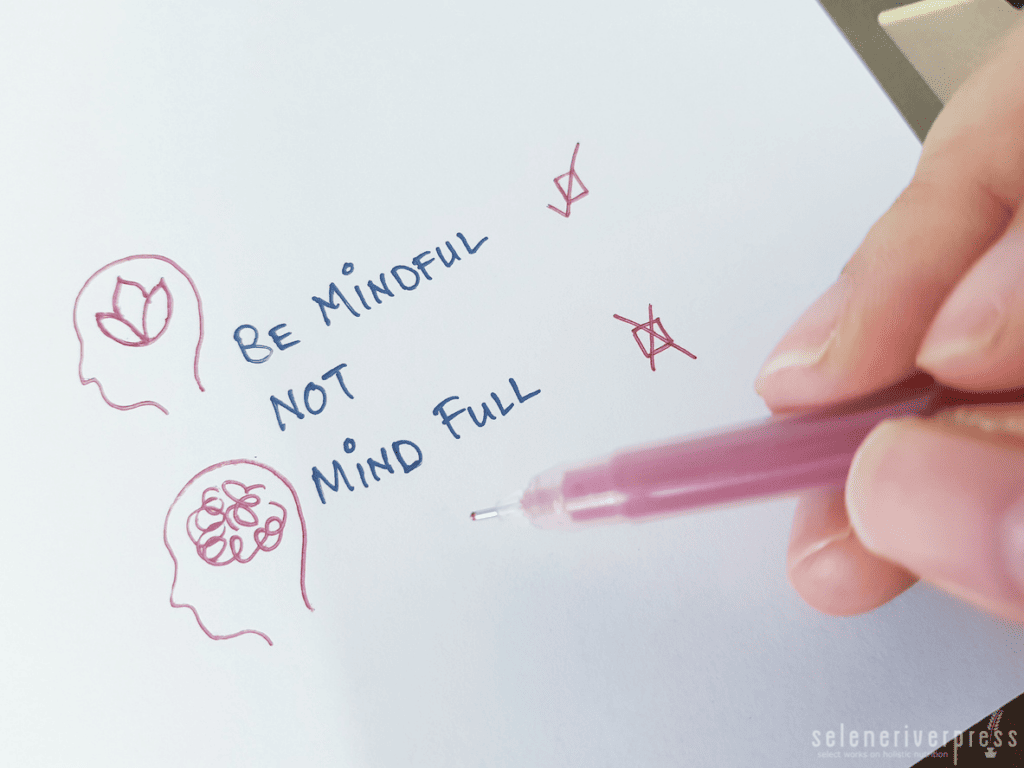“You can’t change who you are, but you can change what you have in your head, you can refresh what you’re thinking about, you can put some fresh air in your brain.”
—Ernesto Berteralli
Have you ever stopped to think about what you think about? We live in a busy, noisy, and distracting world, so pausing to collect one’s thoughts is an activity one must choose to do. Yet many of us do not pause to think or reflect. If your life is not what you expected it to be, it could be your thinking that is causing the obstacles. Psychologist Carol Dweck is an expert on motivation. Her book, Mindset: How You Can Fulfill Your Potential, explores how a person’s pattern of thinking can impact their motivation. A growth mindset is one of continued learning, curiosity, and resiliency. It takes inspiration from others’ success and has the ability to navigate challenges. In contrast, a fixed mindset is one that views other people’s success as a threat and avoids challenges. It does not seek feedback or put forth effort to learn. 
The most exciting part about mindset is that it can change! While there is an assumption we are born with a particular mindset, the human mind has the ability to rewire its mental model. John C. Maxwell writes about this in his book, How Successful People Think.
“The definition of insanity is doing the same thing over and over again and expecting a different result.” This quote is attributed to Albert Einstein. If one of the smartest people on the planet recognized that it takes more than repeated practice to change, how should we approach changing what we think about? The hardest part of change is getting out of our own way!
- A first step is to acknowledge the need for a new mindset. To start something new, you must be ready and willing to change. Purposely set aside time to ask yourself the following questions: What am I thinking about? Why? What is my current mindset? What patterns of thinking led me here? Take a day or two to reflect on these questions and write your honest answers down in the moment. There is no need to pretty up what you’re thinking; this is just for you. For added input, ask the people in your trust circle for their honest assessment on your mindset or what you regularly talk about. Is it positive and proactive, or is it more like Eeyore, always seeing the downside?
- The second step is to visualize your future self with a growth mindset. What is it you want to accomplish? What is that desired future state? By focusing on what you want to accomplish or become, you can build a gameplan for success. If you do not pick your destination intentionally, any road will get you someplace, but probably not any place you want to be. For some of us, visualizing our future state can be scary or overwhelming. Narrow your focus with a manageable future date. For instance, what do you want to accomplish by the end of the calendar year? Focus areas can include health, a relationship, professional aspirations, or a specific project.
- The third step is the action plan for a changed mindset. This is the map for how you move from your current thinking to the growth mindset you want. For many people, setting a specific goal with action items provides the framework for success. Keep it simple! Any plan that is too complicated will not get done—or even started. A good formula to use when turning a goal into an action plan is: “I will [specific action] so that [desired outcome]” This is a good way to hold yourself accountable. For example, let’s assume you want to exercise more. This is a great goal, but how are you going to be successful? To create an action plan to change your mindset, narrow your focus. What do you want to do by the end of the calendar year? A mindset like, “I want to be healthier by Thanksgiving” allows you to set manageable goals. Your action plan could be: “I will walk three days a week so that I can be physically healthy,” or “I will eat fruits and vegetables each day so that I eat less processed foods each day.”
“Very little is needed to make a happy life; it is all within yourself, in your way of thinking.”
—Marcus Aurelius
Let’s use a story problem to illustrate how to shift our mindset. Think about an old dirt road with deep ruts from where the vehicles drive. Imagine that the landscape is beautiful, but the road is rough because of its deep ruts. This is similar to how the brain is wired. As humans, we use neural pathways, like roads, to pass information quickly and efficiently. Yet those same pathways can be detrimental if our thinking is not healthy—if the road has become rutted. We can create new patterns in our brains, but this requires that we purposely practice that change in order to create a new path. Choosing a new mindset is like getting out of the ruts and starting to drive on a different road. The vehicle may want to stay in the existing ruts, but we know it’s not healthy. Purposely and consistently driving on a new area will create a new path to follow.
This is growth mindset in action: seeing the opportunity ahead, being resilient in spite of challenges, and using curiosity to learn from others. The secret sauce to living a fulfilled life is your thinking.
What are you thinking about?
- Know your Why. Think it.
- What is your Why? See it.
- How can you get to your Why? Do it.
Images from iStock/celiaosk (main), Chavapong Prateep Na Thalang (post).




